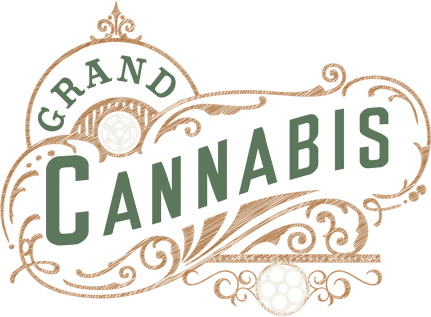Potency is one of the first things shoppers notice on a cannabis label — but the percentage on the package only tells part of the story. This guide explains what potency really means, why it matters, and how to interpret lab results and label information.
What “Potency” Actually Refers To
When people talk about cannabis potency, they typically mean the concentration of active cannabinoids in a product — most commonly THC (tetrahydrocannabinol) and CBD (cannabidiol). These concentrations are usually shown as a percentage for flower (for example, THC: 22%) or as milligrams for processed products like edibles and tinctures (for example, 10 mg THC per package).
Important to note: potency reported on a label represents laboratory testing of the product sample. It is a snapshot of chemical content, not a direct prediction of how any individual will feel.
THC vs THCA: Why Both Matter
 Raw cannabis contains acidic precursors such as THCA (tetrahydrocannabinolic acid) and CBDA. THCA itself is not psychoactive. When THCA is heated (a process called decarboxylation), it converts to THC, which produces psychoactive effects.
Raw cannabis contains acidic precursors such as THCA (tetrahydrocannabinolic acid) and CBDA. THCA itself is not psychoactive. When THCA is heated (a process called decarboxylation), it converts to THC, which produces psychoactive effects.
Some lab reports list both THC and THCA. For inhalable products this distinction is more directly meaningful; for packaged goods the label may show total potential THC (a calculated figure that includes THCA converted to THC). Understanding these terms helps interpret potency accurately.
How Potency Is Measured: Lab Testing & COAs
Licensed producers submit samples to accredited labs. A Certificate of Analysis (COA) provides verified numbers for cannabinoids (THC, CBD, CBG, CBN, etc.), terpenes, and screening for contaminants like pesticides, heavy metals, and residual solvents.
When buying products, look for a batch number or QR code linking to the COA — that’s your best way to confirm label accuracy and safety. Our guide on How to Read a Cannabis Label explains where to find this information on legal Canadian products.
Percentages, Milligrams, and “Per Serving” Logic
Different product types display potency differently:
- Flower: THC/CBD is shown as a percentage of dry weight (e.g., 18% THC).
- Edibles & beverages: Potency is shown as milligrams per package and often per serving (e.g., 10 mg THC per package; 2 mg per gummy).
- Concentrates & extracts: Often expressed as percentages or mg/g (e.g., 90% THCA).
Always check the “per serving” information for multi-piece products — a package total does not always equal the amount you consume in one serving.
Why Potency Isn’t the Whole Story
 High THC percentage indicates more of that cannabinoid, but it doesn’t guarantee a “better” or more desirable effect. Several other factors influence the user experience:
High THC percentage indicates more of that cannabinoid, but it doesn’t guarantee a “better” or more desirable effect. Several other factors influence the user experience:
- Terpene profile: Aromatic compounds that shape flavour and can subtly influence subjective effects.
- Cannabinoid mix: Presence of CBD, CBG, or CBN alters effects; products labeled “full spectrum” or “broad spectrum” include multiple compounds that can interact synergistically.
- Product form and bioavailability: How a cannabinoid is delivered (smoked, vaped, beverage, edible) affects how quickly and how strongly it acts.
For example, some beverages that use nanoemulsion technology can feel faster-acting than traditional edibles — check our Nanoemulsions in Cannabis Drinks 101 for details.
Common Lab Terms You’ll See on Reports
Reading a COA becomes easier once you know the terminology:
- ng/g, mg/g, %: Units used to report concentrations.
- Limit of Detection (LOD) & Limit of Quantification (LOQ): The smallest amount the lab can reliably detect or quantify.
- Pesticide screen: Verifies the product is free of harmful residues.
- Residual solvents: Important for extracts produced with solvents — COAs show whether levels are within safe limits.
If a label or COA is hard to understand, your licensed retailer or a budtender can usually walk you through it. See our article on Cannabis Survey Insights for why transparency and testing are increasingly important to consumers.
Factors That Affect Potency During Storage & Use
Potency can change over time if products are stored poorly. Heat, light, oxygen, and humidity break down cannabinoids and terpenes. To preserve potency, products should be stored in a cool, dark, airtight container — labels typically include storage recommendations and “best before” dates.
For tips on keeping product quality high, see our storage-focused posts and guides in the Cannabis Corner.
Potency & Regulation in Canada
Canada’s regulatory framework requires clear labeling, testing, and limits for certain product types (for example, serving limits for edibles). This helps consumers compare products safely and encourages producers to provide accurate potency information. To understand how provincial rules may affect product availability and limits, read our overview of Navigating Ontario’s Cannabis Laws.
How to Use Potency Information — Responsible & Informed
Potency numbers are most useful when paired with knowledge about product type, your past experience, and the product’s COA. If you are researching products for educational or purchasing purposes, focus on:
- Comparing per-serving amounts and total package potency
- Checking COAs to confirm label accuracy and contaminant screening
- Considering terpene and cannabinoid mixes, not just THC percentages
Our label-reading guide is a practical companion for this step-by-step verification process.
Final Notes: Potency as Part of a Bigger Picture
Potency is a crucial metric, but it’s only one piece of the puzzle. Accurate lab testing, transparent labeling, cannabinoid diversity, terpene content, and product form together determine the consumer experience. Prioritizing verified information over marketing claims helps you make safer, more predictable choices — and supports a healthier, more transparent cannabis market.
For additional reading, explore these Grand Cannabis resources:

